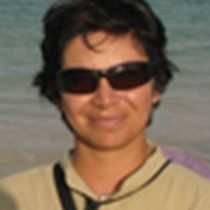Genovesa Island, which is located in the northeastern realm of Galapagos, is the home of large colonies of seabirds such as Nazca boobies, red-footed boobies, great frigate birds, swallow-tailed gulls and lava gulls. We headed ashore in both the morning and the afternoon to two different sites, Prince Phillip steps and Darwin Bay. During both excursions, we encountered male great frigate birds with their bright red gular pouches fully inflated, trying to get the attention of females by making loud calls and flapping their wings. Several red-footed boobies were spotted as we walked along the coast; some were nesting, others were looking for mates and others had already large juvenile chicks waiting to be fed. At Prince Phillip steps we also observed the top predator of the island, the short-eared owl, hunting for Galapagos storm petrels that were flying by the thousands over the rusty lava flow.
Later in the morning, we returned to the ship and prepared to go to the beach for some relaxing time, while some of our guests went to snorkel in deep waters along the cliffs. Our snorkelers were lucky enough to encounter several scalloped hammerhead sharks swimming peacefully underneath us. Another surprising encounter was a large school of Mobula rays, at least thirty individuals swimming together in perfect synchronicity along the cliffs.
For the afternoon we returned to land to observe more of the birds that inhabit this island. The late afternoon light was great for photography. At the end of the walk, we enjoyed great views of the interior of the caldera as thousands of birds flew over our heads.







